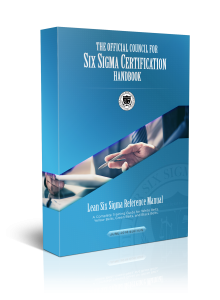Lean Six Sigma Free Pdf
Getting to grips with the methods of Lean Six Sigma to improve business performance and make your teams more productive? Use this helpful Cheat Sheet to remind yourself of the key principles of this powerful strategy.
Lean Six Sigma’s Key Principles

Lean Six Sigma is a powerful, proven method of improving business efficiency and effectiveness. In a nutshell, here are the key principles of Lean Six Sigma to bear in mind:
PDF created with pdfFactory Pro trial version www.pdffactory.com. Lean six sigma minitab Download lean six sigma minitab or read online books in PDF, EPUB, Tuebl, and Mobi Format. Click Download or Read Online button to get lean six sigma minitab book now. This site is like a library, Use search box in the widget to get ebook that you want. Lean Six Sigma Minitab. Six Sigma is a quality measurement that represents 3.4 Defects Per Million Opportunities. That’s a lofty goal for many business processes, but you can use Six Sigma methods to improve quality and performance in varying degrees based on the needs and objectives of a business or project. Lean Six Sigma combines two methods that streamline business processes in order to reduce waste, improve quality, and increase efficiency and product value. Both approaches originated in the manufacturing industry - Lean by Toyota and Six Sigma by Motorola - but today they are used to.
Focus on the customer
Identify and understand how the work gets done (the value stream)
Manage, improve and smooth the process flow
Remove non-value-adding steps and waste
Manage by fact and reduce variation
Involve and equip the people in the process
Undertake improvement activity in a systematic way


How to Use DMAIC in Lean Six Sigma
To undertake improvement activity in your existing business processes in a systematic way using Lean Six Sigma, you need to employ the useful framework of DMAIC:
Define: Projects start with a problem that needs solving. Make sure everyone involved knows their role, why you’re doing the project and what you’re trying to achieve with the project.
Measure: The work you’ve done in the Define stage is based on what you think the problem is. During the Measure stage you need to clarify things by seeing how the work gets done and how well.
Analyse: Now you know what’s happening, it’s time to find out why, but don’t jump to conclusions. Manage by fact to check out the possible causes and get to the root cause.
Improve: Okay, you know about the process and the problem. Now, in the Improve stage, you need to find a way to address the root cause, so come up with some ideas, select the best one and test it out.
Control: You need to implement the solution, and ensure you achieve and hold the gain you’re looking for. Putting a control plan in place is vital to ensure that the process is carried out consistently.
Value with Lean Six Sigma
When you’re trying to improve value for your customers with Lean Six Sigma, remember that, in your customers’ eyes, value is what they’re willing to pay for:
The right products and services
At the right time
At the right price
At the right quality
For a step to be value-adding, it must meet the following three criteria:
The customer has to care about the step
The step must either physically change the product or service in some way, or be an essential prerequisite for another step
The step must be actioned ‘right first time’
Try to remove those steps that don’t meet these criteria, but recognise that you may want to retain some non-value-adding steps, perhaps for regulatory or financial reasons, for example.
You need to identify and understand the value stream and eliminate waste and non-value-adding steps. As little as 10 to 15 per cent of process steps add value, often representing only 1 per cent of the total process time.
How to Tackle Waste with Lean Six Sigma
Six Sigma Training Pdf
You can improve process flow in a number of ways using Lean Six Sigma, including by reducing waste. The seven categories of waste are sometimes identified by the acronym Tim Wood:
The Lean Six Sigma Pocket Toolbook Pdf Free
Transportation: Moving materials and output unnecessarily.
Inventory: Overproduction resulting in too much work in progress or stock.
Motion: Inappropriate siting of teams or equipment.
Waiting: Equipment failure, for example, which causes delays.
Overprocessing: Performing unnecessary processing steps.
Overproduction: Producing more stock or producing it earlier than needed.
Defects: Dealing with rework.